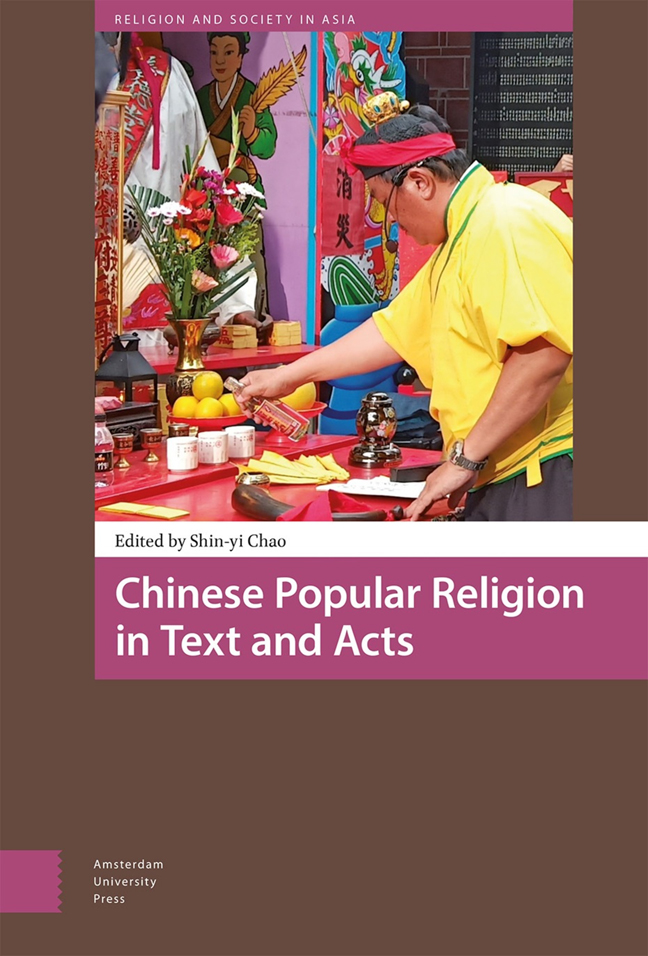Book contents
- Frontmatter
- Contents
- List of Figures and Tables
- Acknowledgements
- Dedication
- Introduction: Text, Acts, and Traditionalization: Performing Chinese Popular Religion
- Section One Texts And Acts
- Section Two Scriptures and Rituals
- Section Three Saints’ Legends and Gods’ Lore
- Section Four Temple Festivals and Pilgrimages
- Index
3 - Shuilu Rites and the Baodingshan Rock Carvings of Dazu
Published online by Cambridge University Press: 26 March 2024
- Frontmatter
- Contents
- List of Figures and Tables
- Acknowledgements
- Dedication
- Introduction: Text, Acts, and Traditionalization: Performing Chinese Popular Religion
- Section One Texts And Acts
- Section Two Scriptures and Rituals
- Section Three Saints’ Legends and Gods’ Lore
- Section Four Temple Festivals and Pilgrimages
- Index
Summary
Abstract
The rock carvings at Baodingshan 寶頂山 (Treasure Summit Mountain), Dazu, Chongqing Municipality, represent the high achievement of Chinese Buddhist rock art. Scholars have offered various readings of the site’s design but many questions remain. This article suggests that the Baodingshan site was created, and designed accordingly, to serve as a venue for holding shuilu or the Buddhist rites of deliverance of creatures of water and land. The article first introduces the early states (i.e., the Song times) of the Shuilu rites which are very different from the contemporary version. The next section analyzes three elements at the Baodingshan site that indicate the site to be a ritual space for shuilu: Yuwen Qi’s 宇文屺 verse carved at the foothill of the site; the shared compositional characters of the carvings; and, the gāthā (jie 偈) of jiashi re tielun假使熱鐵輪.
A new frontier for the study of Buddhist rituals in medieval China can be opened by closely reading the rock carvings at Buddhist sites within the framework of shuilu ritual.
Keywords: Baodingshan, zhai (ritual feasting), shuilu fahui (water-land dharma assembly), cave temple, Buddhist ritual
Shuilu fahui 水陸法會 or Water-land Dharma Assembly (hereafter, the shuilu), which is intended for the deliverance of all creatures, is the grandest of all Chinese Buddhist ceremonies, and is thus included in any scholarly discussion of Buddhist rituals. Nevertheless, despite abundant publications, progress on the study of this ritual was rather limited because of narrow access to sources. Materials employed by modern researchers were limited to canonical and modern texts. Thus, the eminent Buddhologist Zhou Shujia 周叔迦 (1899–1970) determined that shuilu is a fusion of the “compassion repentance” ritual (attributed to Emperor Liang Wudi 梁武帝, r. 502–549) and the Tang-dynasty esoteric Buddhist ritual of the netherworld cult (mingdao gong 冥道供). Makita Tairyō 牧田諦亮 (1912–2011) categorized shuilu as a type of “release of the flaming mouths” (fang yankou 放焰口) ritual benefiting the dead. The shuilu rite as a grand mass for the deliverance of the dead has since defined the practice in modern academic studies of Buddhism.
However, the above definition of shuilu is based on canonical texts, Qing dynasty (1644–1911) ritual manuals, and contemporary practice.
- Type
- Chapter
- Information
- Chinese Popular Religion in Text and Acts , pp. 89 - 104Publisher: Amsterdam University PressPrint publication year: 2023



